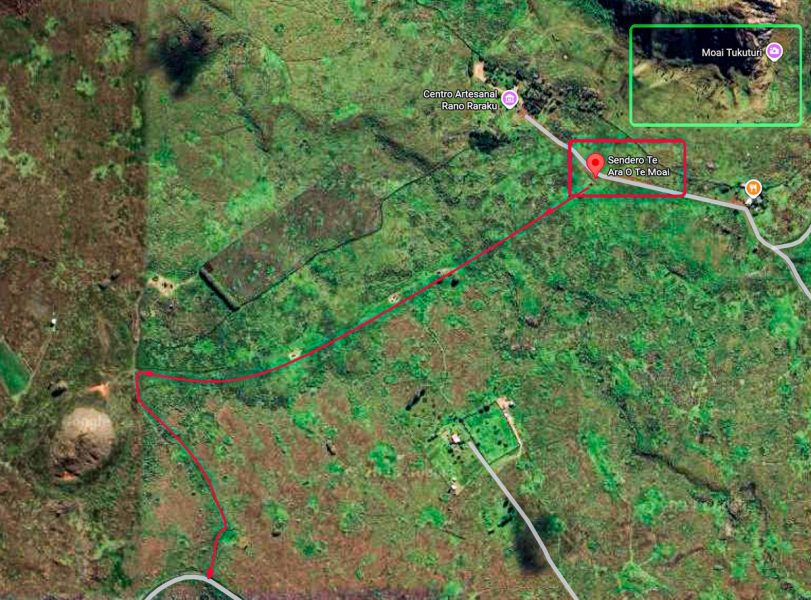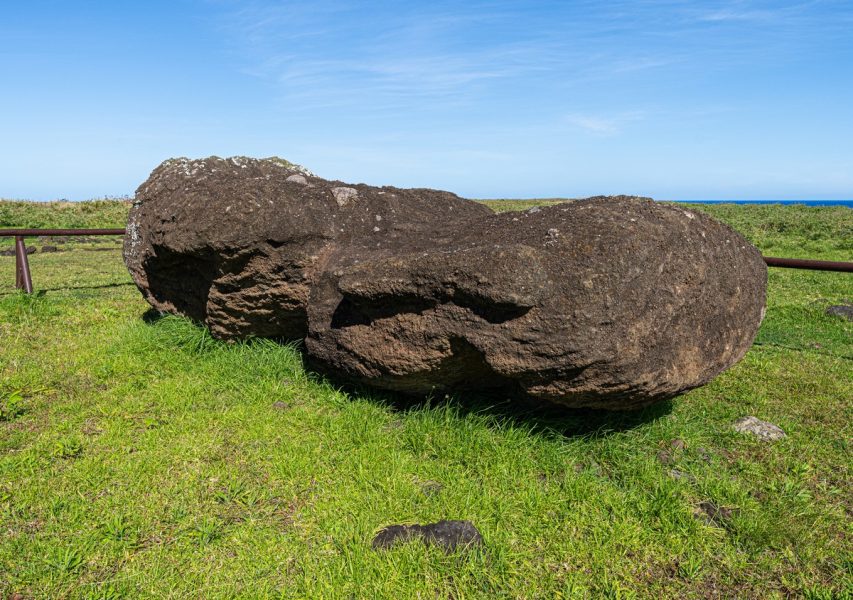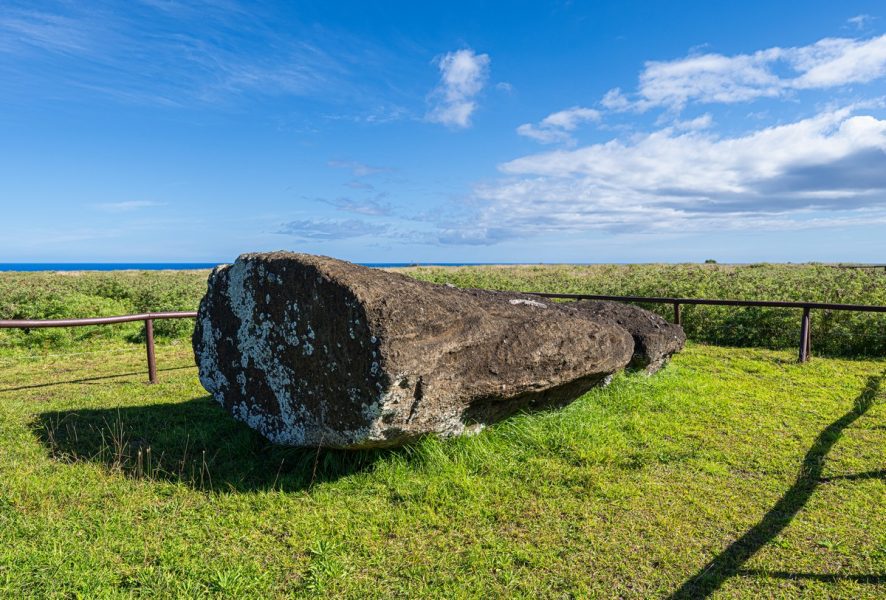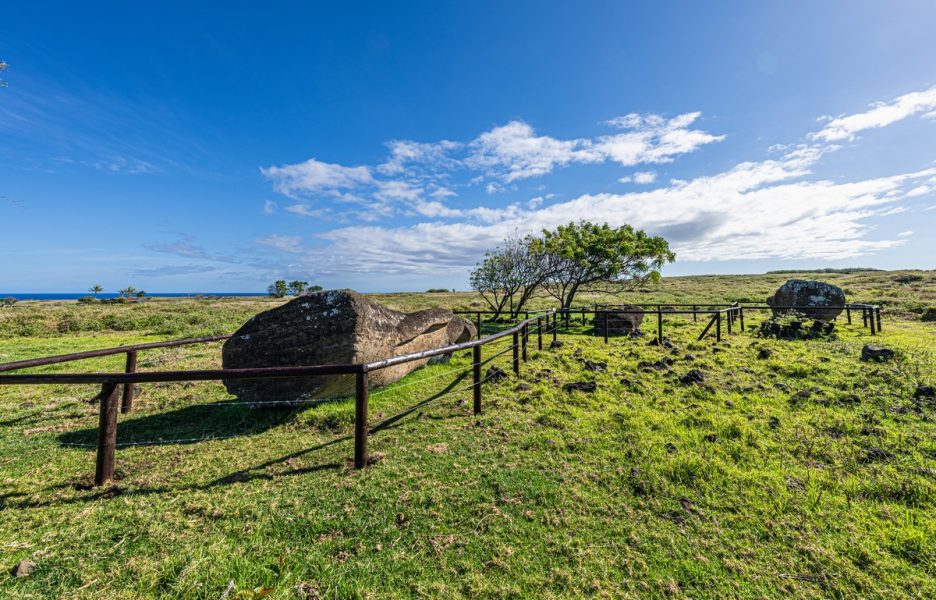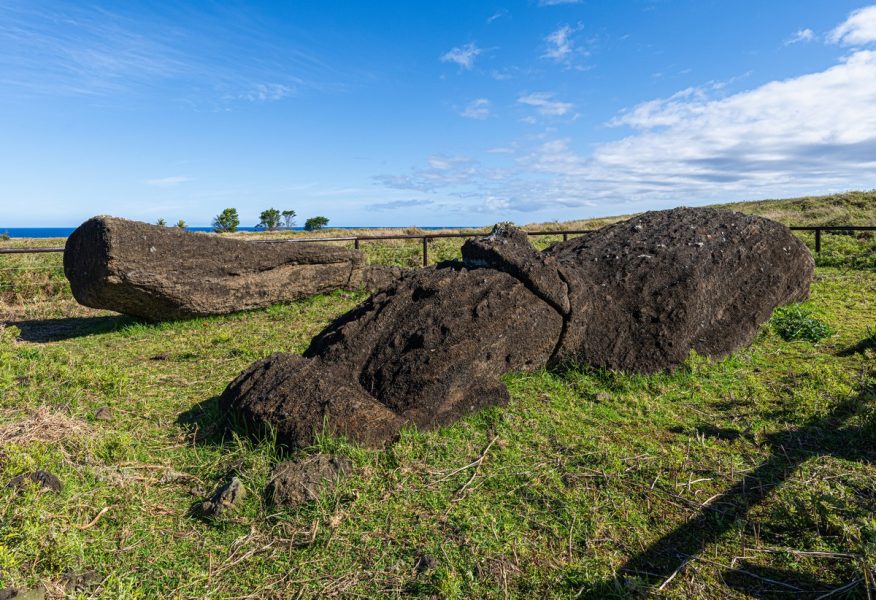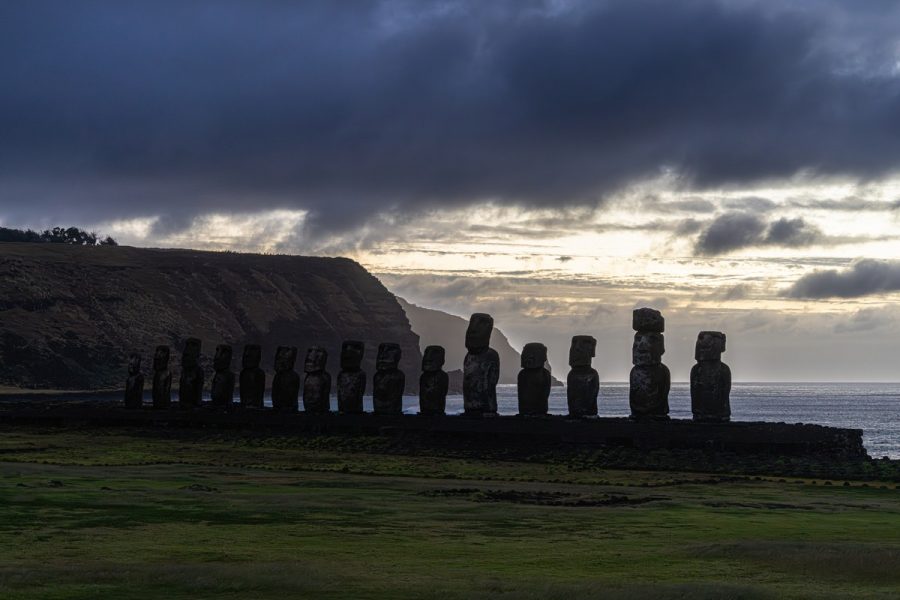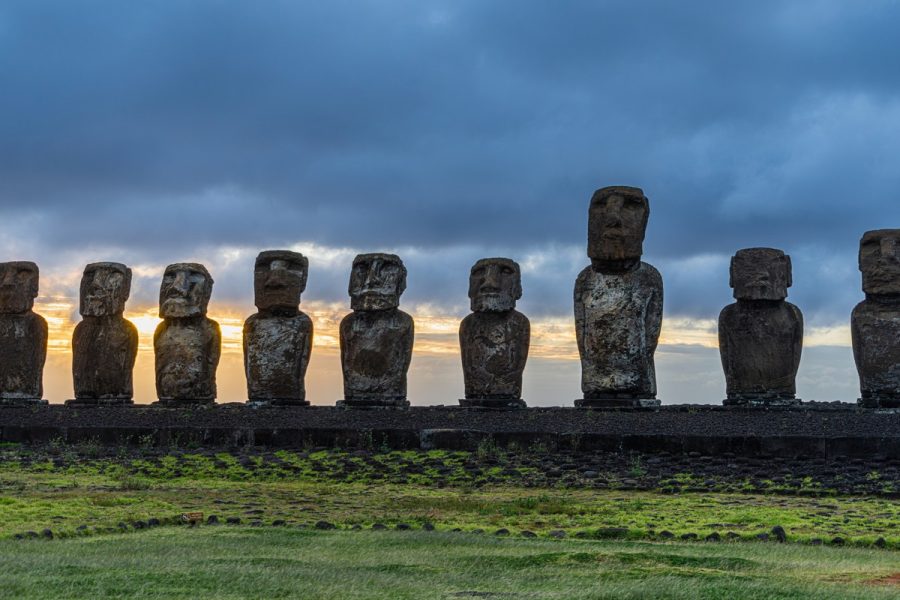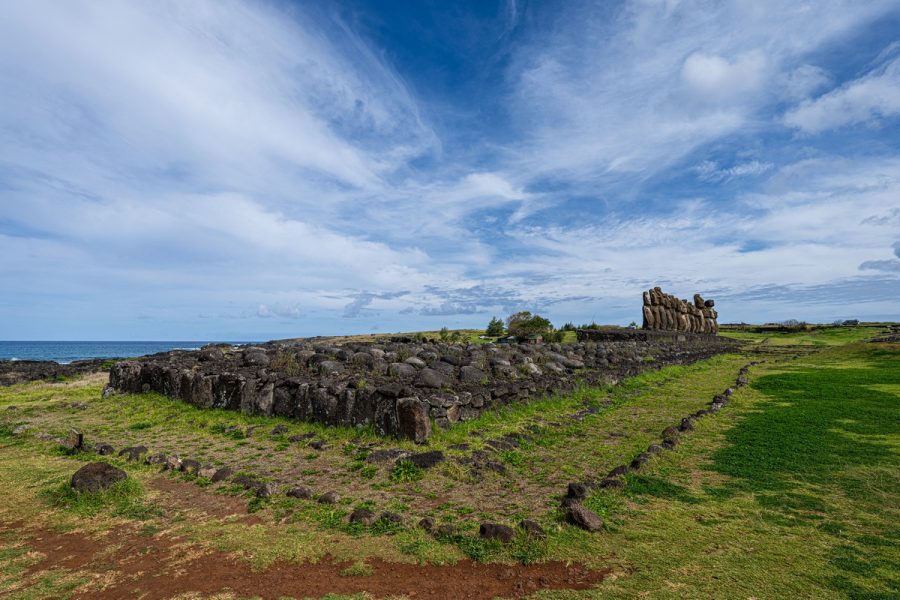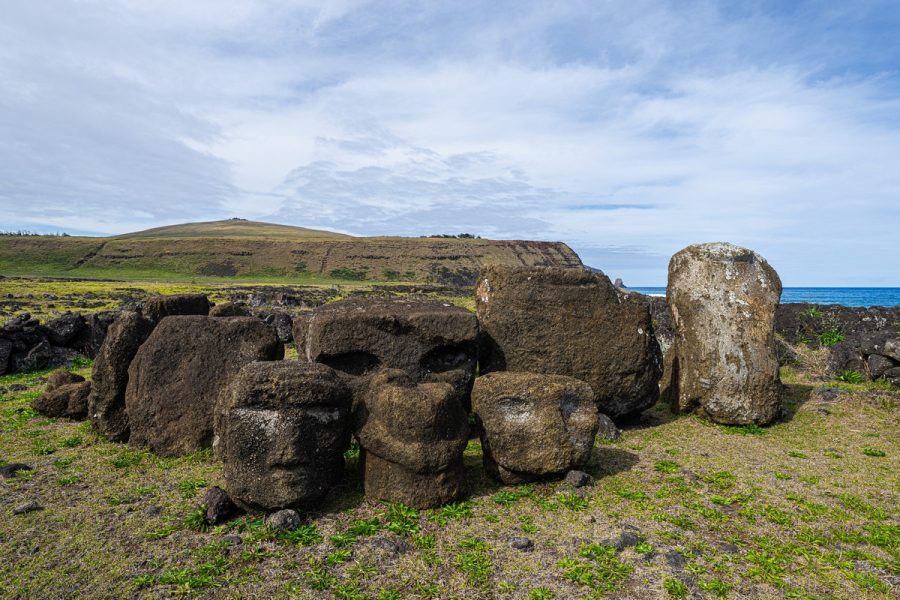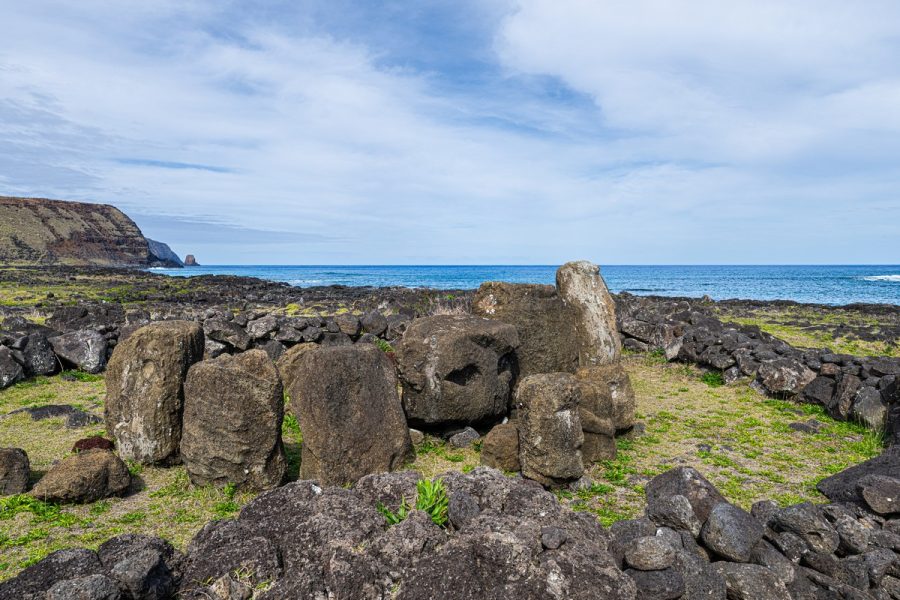November 26, 2025
A ritual moai platform at dawn: zero chance of a yawn.
After first checking out the moai quarry, it was time for a stroll amid the landscapes of Rapa Nui (aka Easter Island). Of course, there’s none of the vastness of the Kenyan or Tanzanian savannas, no endless Arctic tundra of Taymyr, no boundless, unforgiving desert of the Sahara, Saudi Arabia, or Australia. Everything on the island is much more modest, but there’s still plenty of wandering about to be done between lunch and dinner.
Beginning our roam-stroll, the first thing to attract our attention – a moai statue lying face down! Why, we wondered. Alas – no tourist info-plaques. Still, we’ve the internet these days, but it always gives a thousand conflicting theories. But I digress…
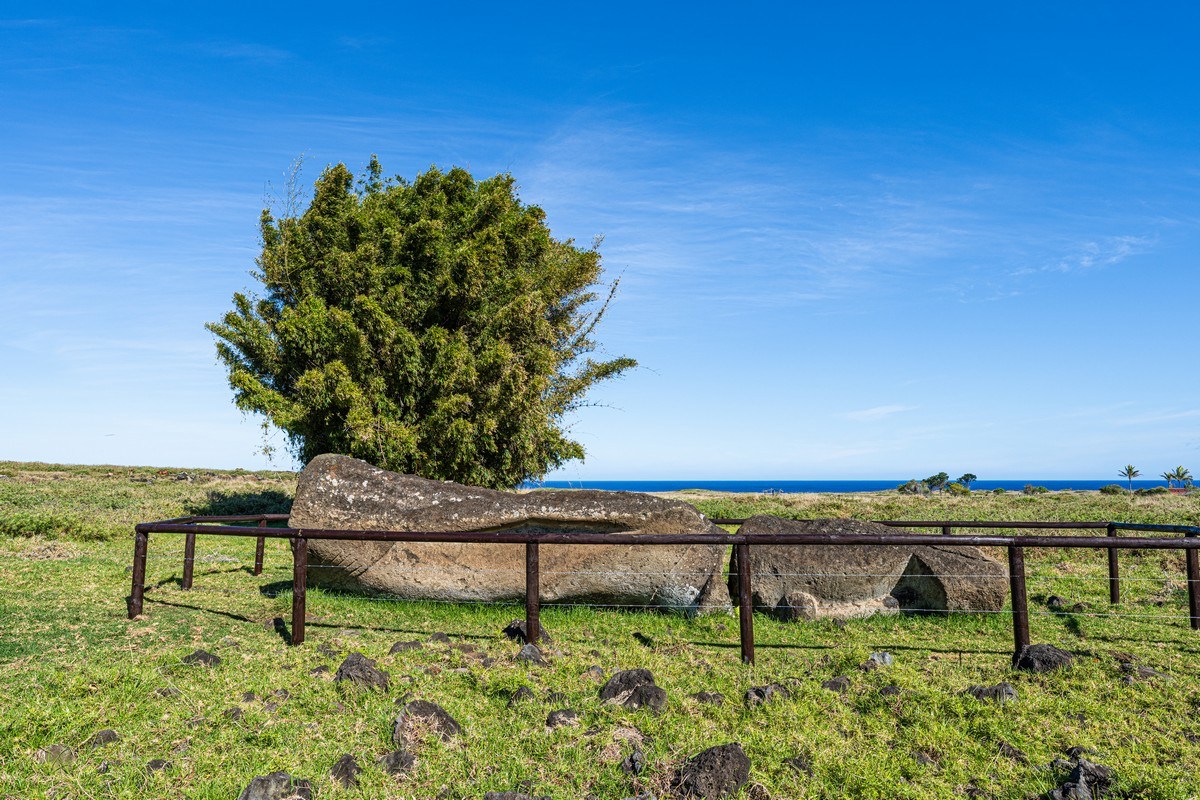
The further we walk, the more moai we come across similarly face down along the trail we were on ->
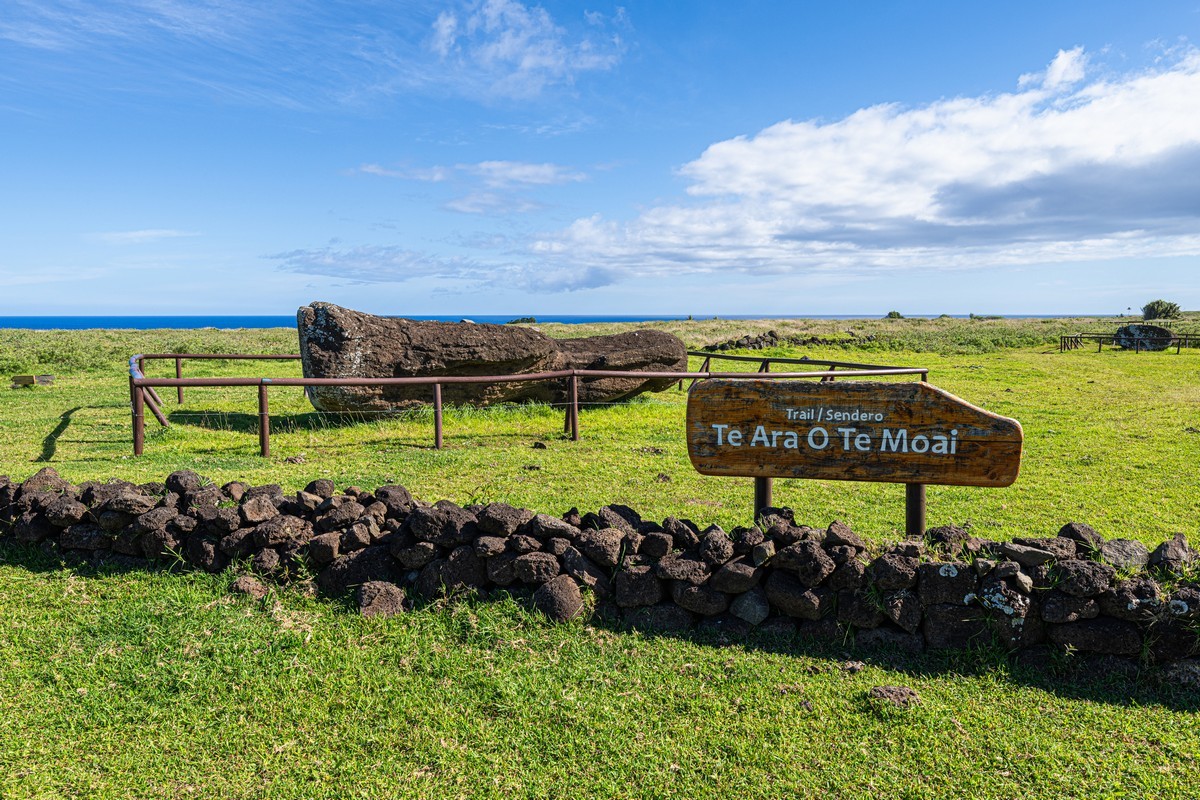
From the quarry to the last in lying statue it’s not far – just about a kilometer and a half:
It’s as if the moai themselves were walking all in the same direction, and then some force came along from behind and knocked them over (at least, in my imagination:) ->
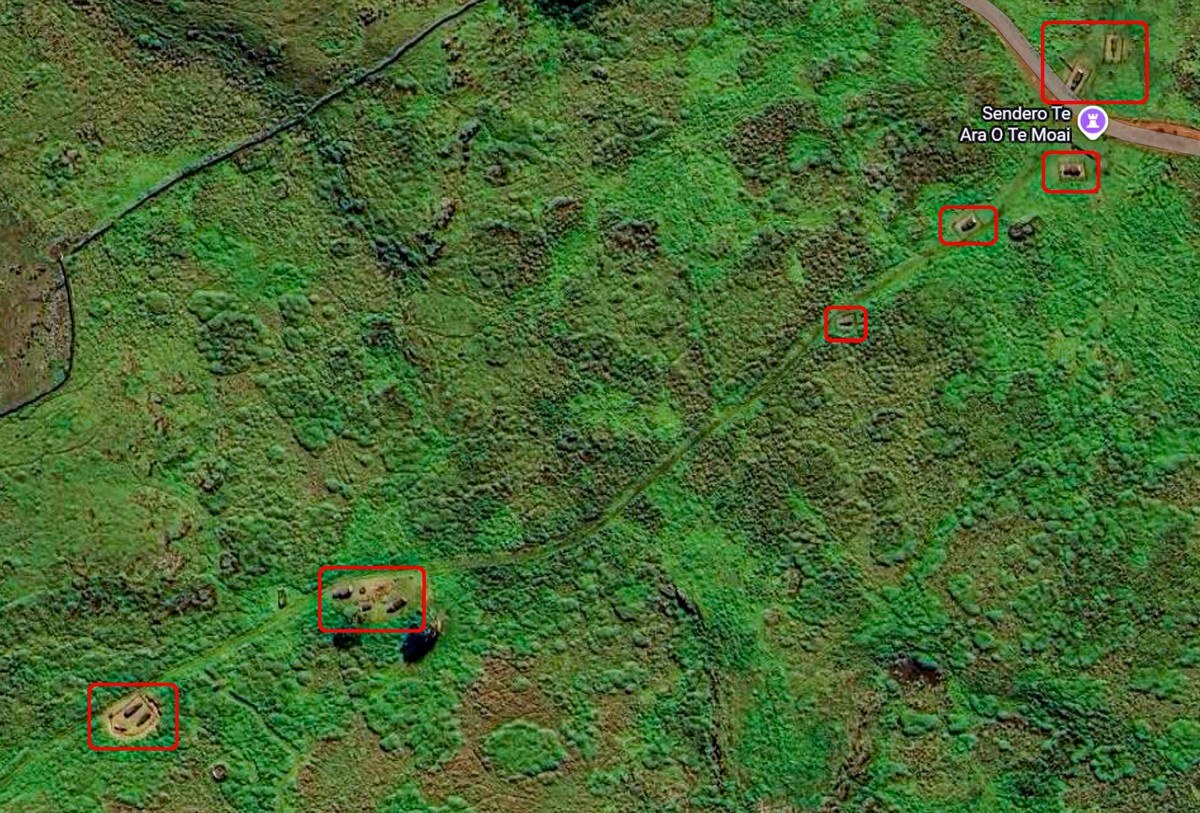
So, what are the main theories? Here’s one I’m leaning toward…
Apparently, the statues were moved upright – rocked back and forth with ropes, and gently twisted right and left: a bit like how folks sometimes move heavy barrels – rocking them side to side and turning them slightly (kind of like this!). And mistakes were bound to happen, and the statues would sometimes topple over. If they stayed intact, they’d be picked up and cajoled along further; but if something broke off – like the head (some of the lying moai are headless), then the broken pieces were just abandoned (and the disgruntled Rapa Nui people would probably have gone back to the quarry for warranty replacement:).
That all seems plausible to me. And considering that around a thousand moai have been found on the island, the percentage of breakage during transportation was actually quite small.
The largest ritual-platform-installation (“ahu“) of moai on the island is Ahu Tongariki. Today it features 15 statues; how many there were originally is unknown, since they were all knocked down during local tribal wars, and then, in modern times, a tsunami (after a major earthquake on the mainland) swept away the whole structure. In short, the fate of these moai was far from simple…
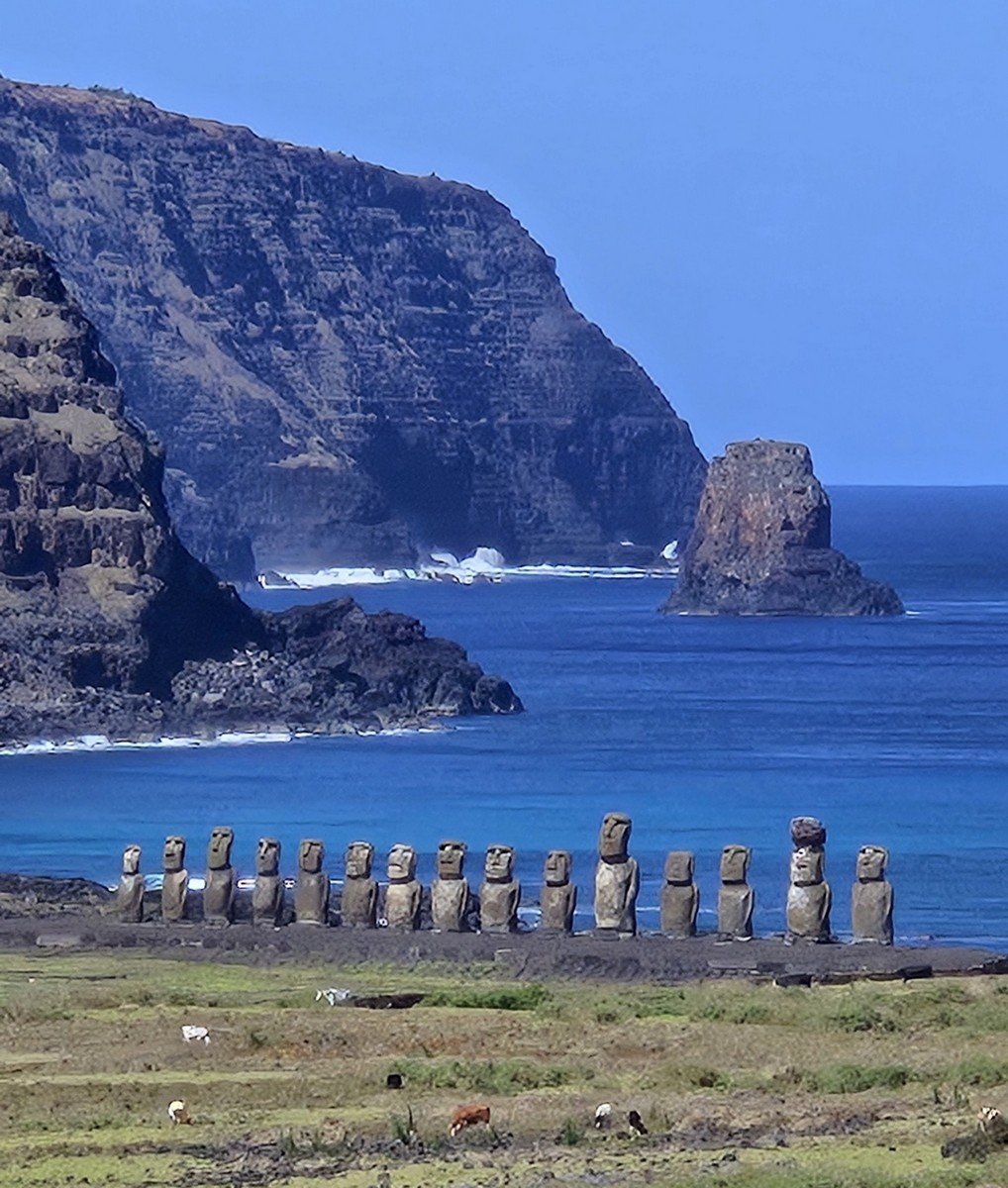
In the 1990s both the platform and statues were restored and are now open to tourists:
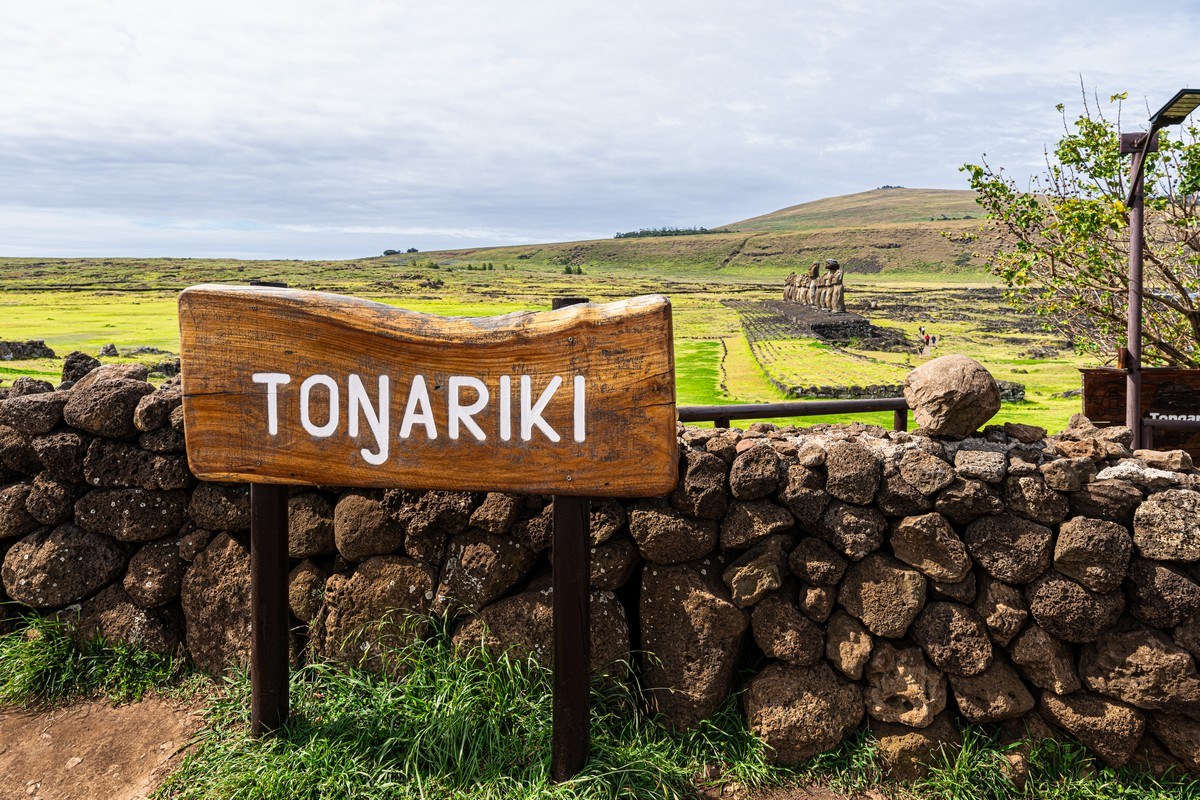
By the way, “ahu” actually translates as “ritual platform”. More than 200 (!) of these platforms have been found on the island, but most have been badly damaged with time.

A lone statue. How it ended up here all on its lonesome, and not on a platform: a mystery.
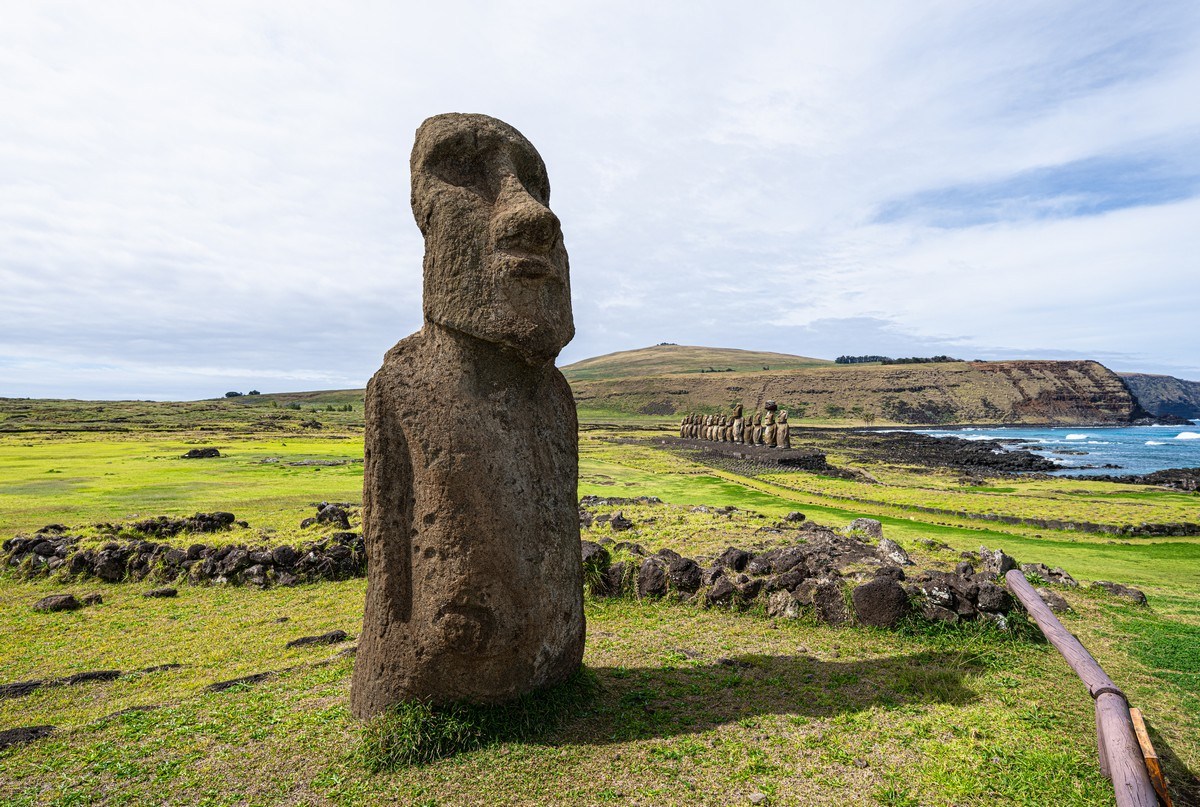
And here are the statues themselves:
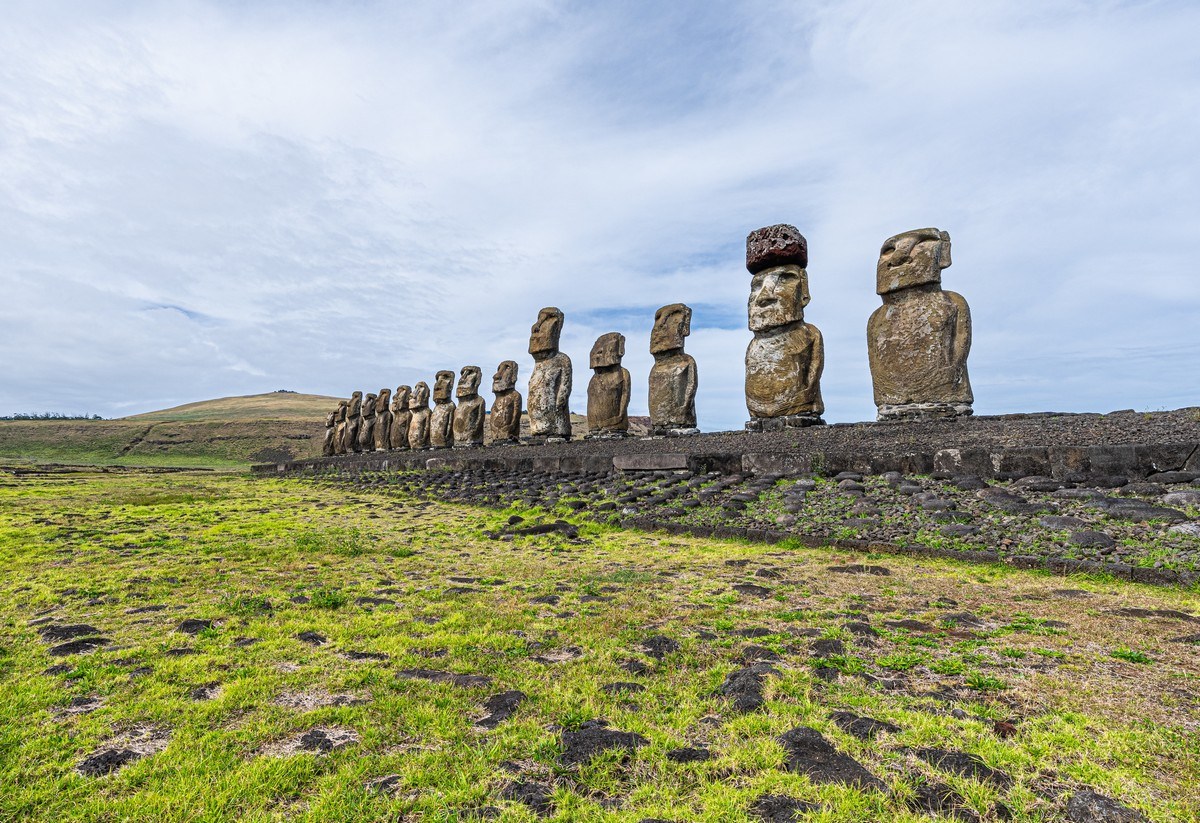
Walking around them and imagining scenes from the past – you really start to feel the atmosphere. It’s a powerful place.
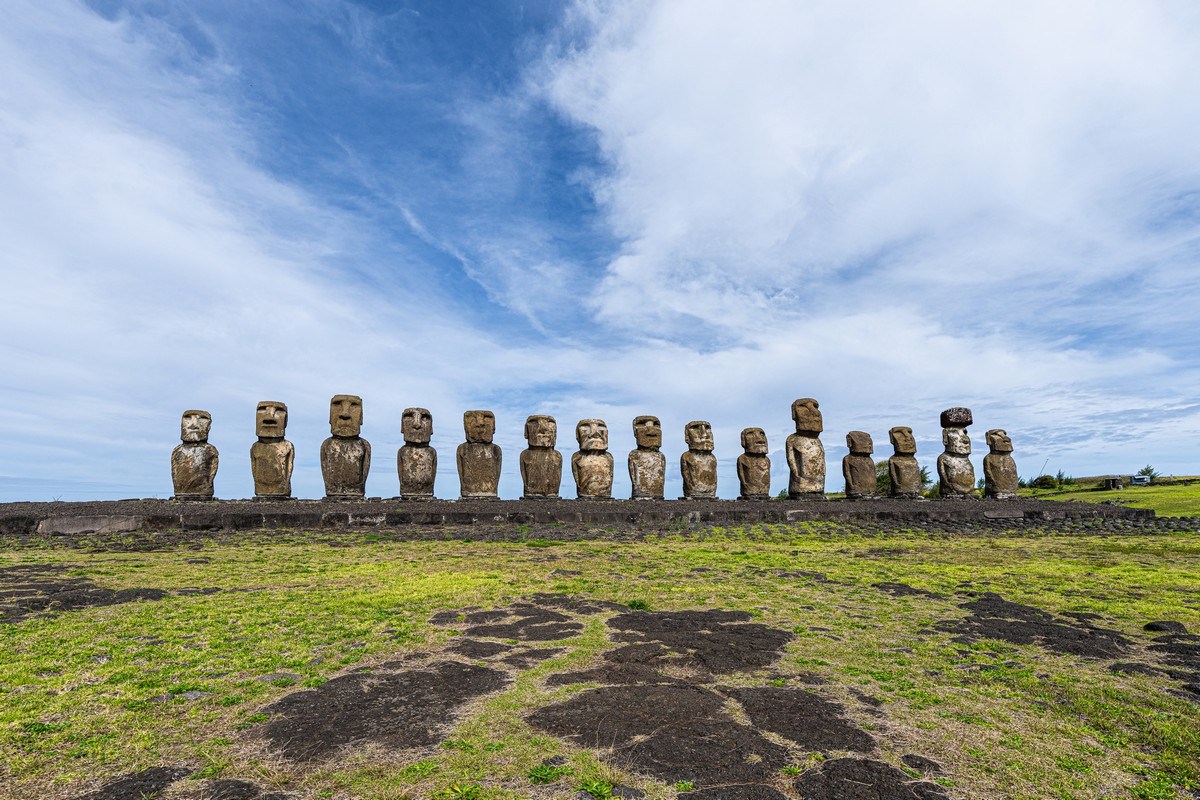
Almost all the statues stand with their backs to the sea. As we were told, they were always set up near villages, but they didn’t symbolize protection from outside enemies (there weren’t any from the sea). According to one theory, they were local gods who gave strength and prosperity to the villagers. According to another, they were monuments to deceased tribal chiefs, or perhaps local priests.
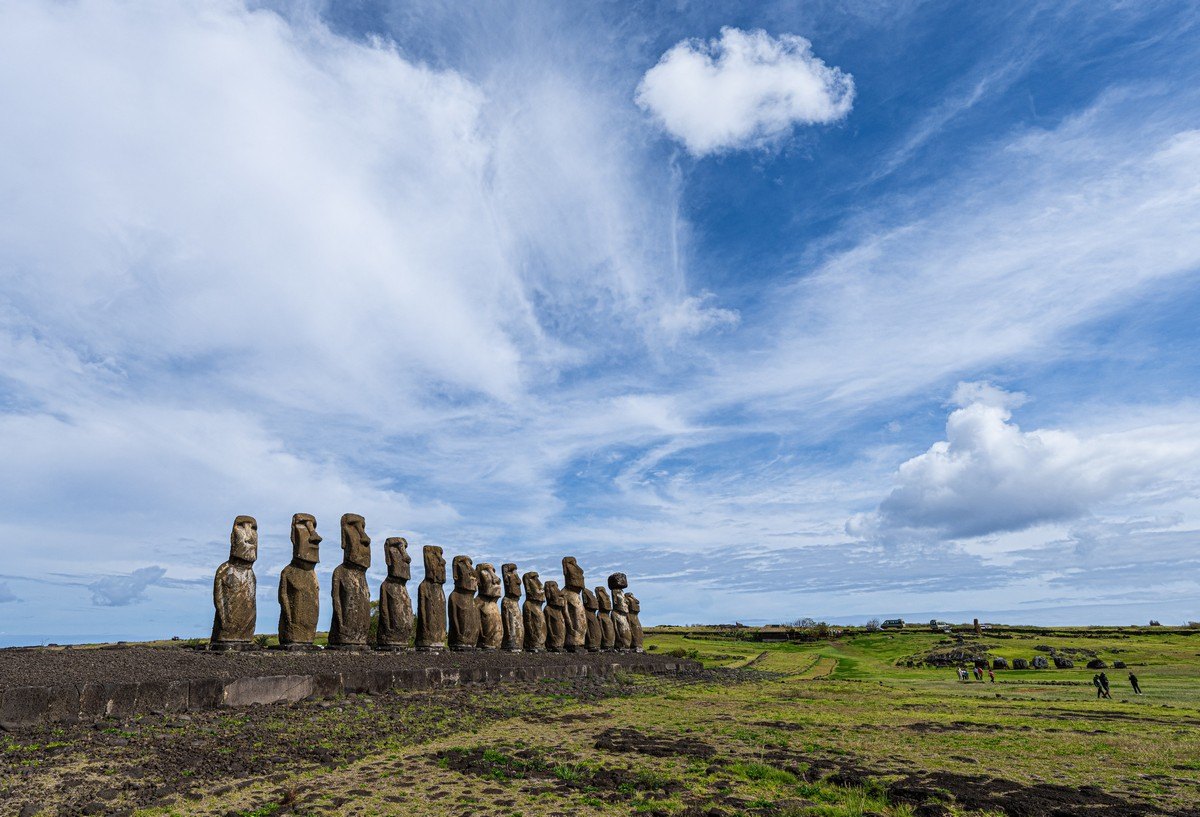
And so they stood for centuries, watching the rise and fall of the island’s civilization, thousands of kilometers from any other inhabited islands in the Pacific.
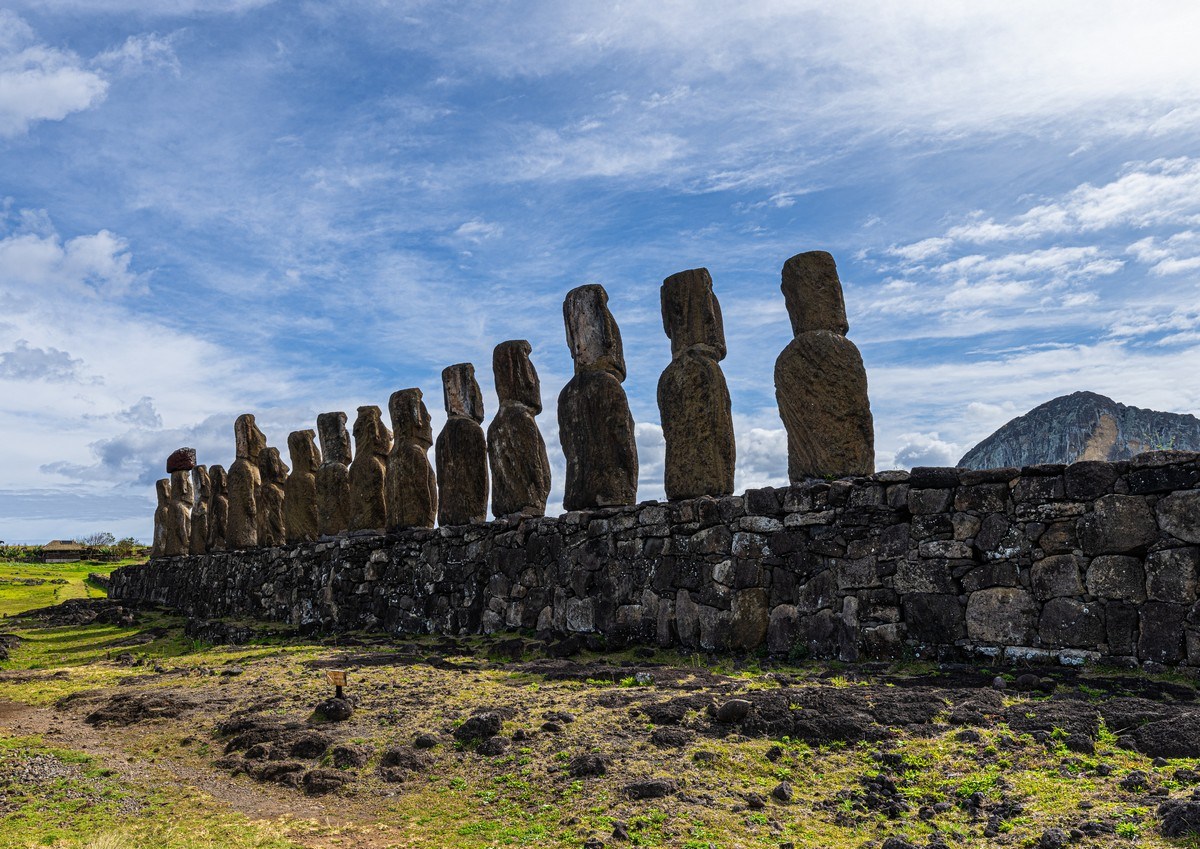
At dawn, Ahu Tongariki looks even more magnificent:
By the way, as I found out, not many tourists come here at sunrise (no complaints there:)…
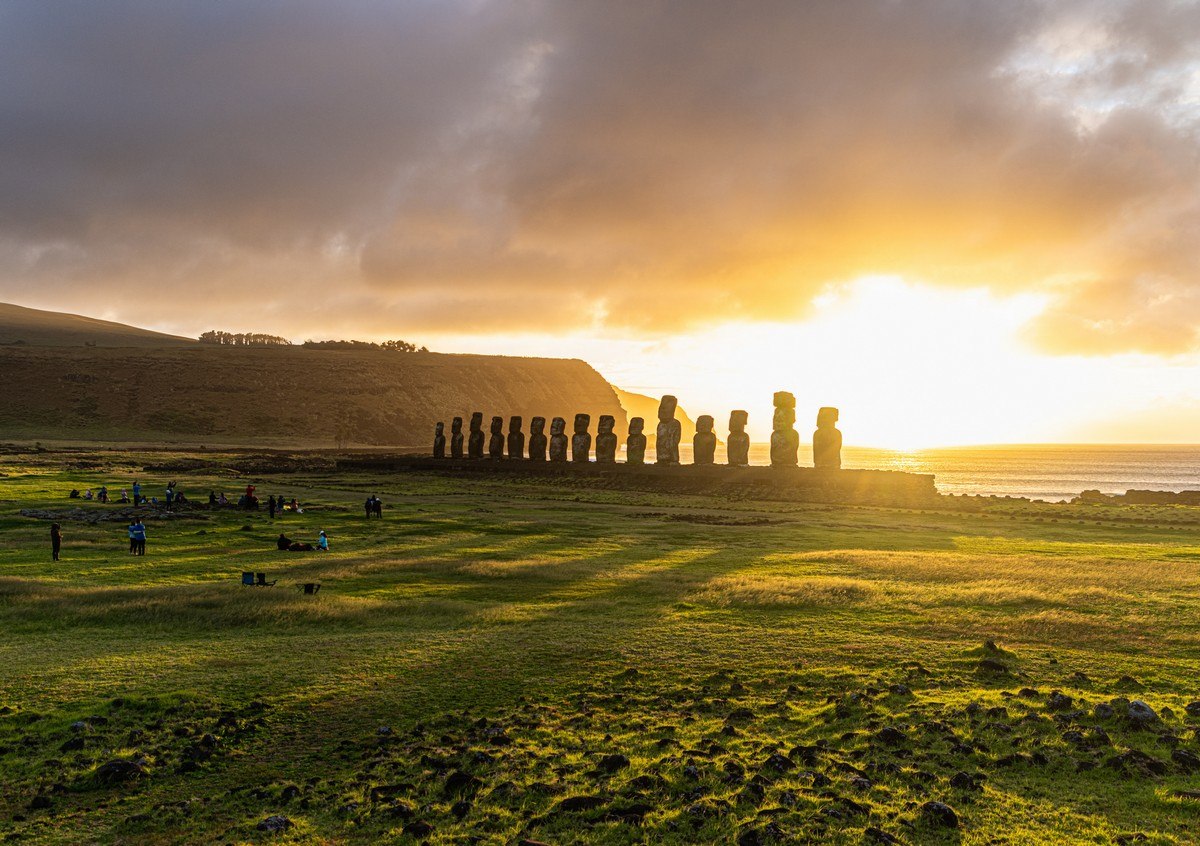
Oh my golden-gorgeous!
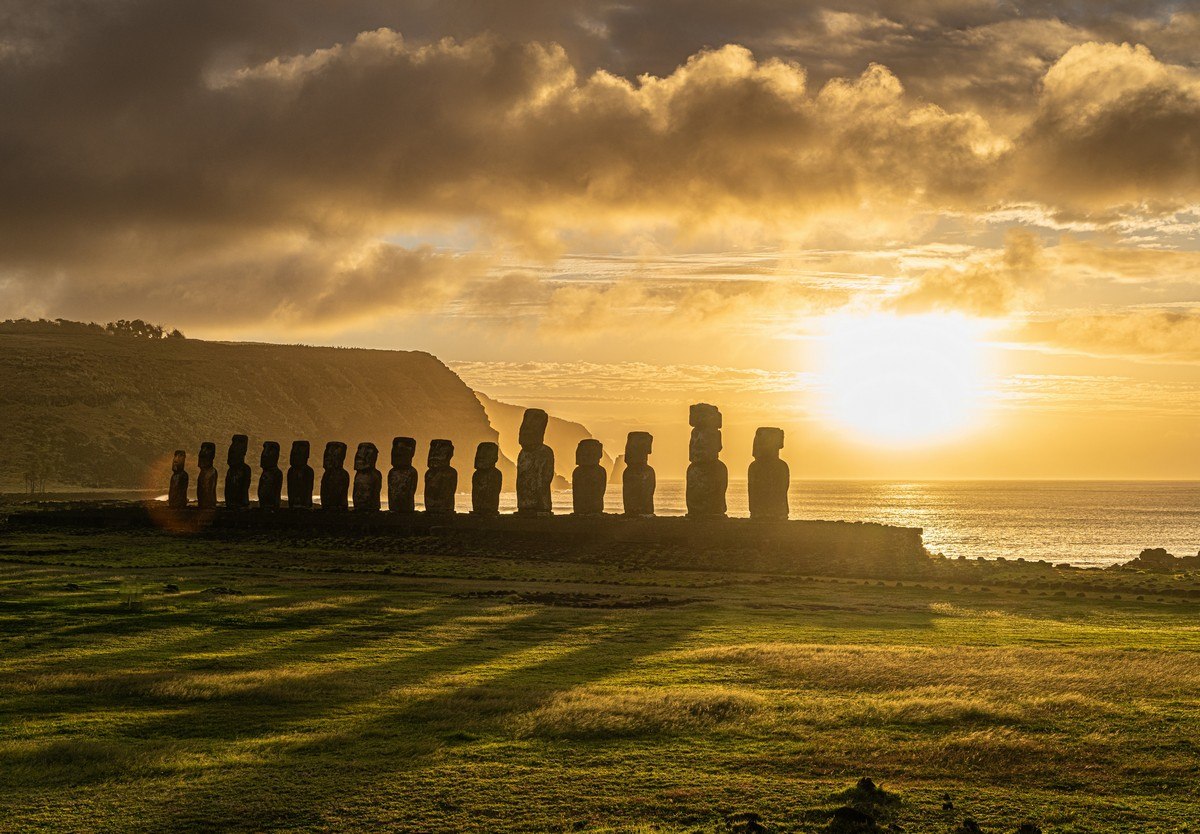
This site was also used for astronomical purposes. As we were told, on the day of the summer solstice (which is in December here), the sun rises exactly in the middle of the platform (if you stand perpendicular to it):
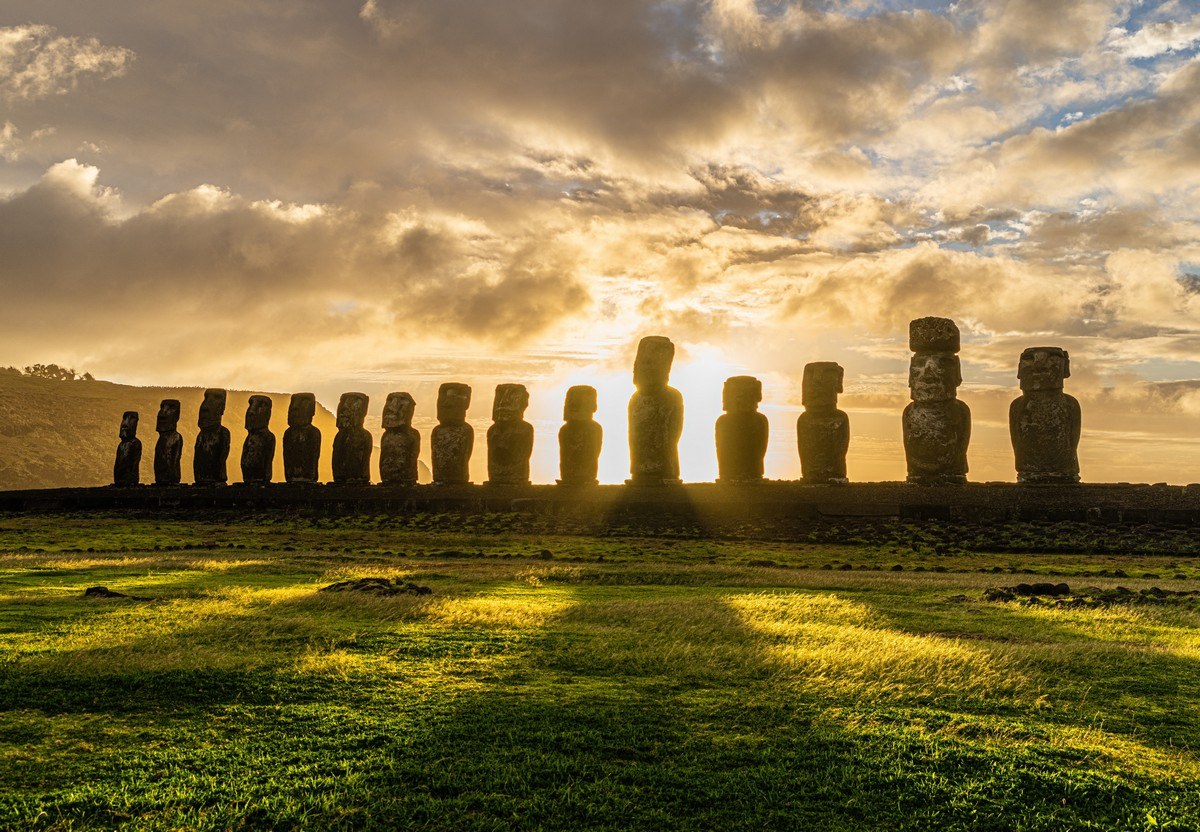
So if you’re ever on Rapa Nui, whatever you do – don’t miss the sunrise at Ahu Tongariki!

The view of the quarry:

Red pukao that once adorned the heads of the statues:

Apparently the pukao aren’t hats, but a depiction of hair: the local tribes liked to dye their hair red or reddish, and they passed this tradition on to the moai statues.
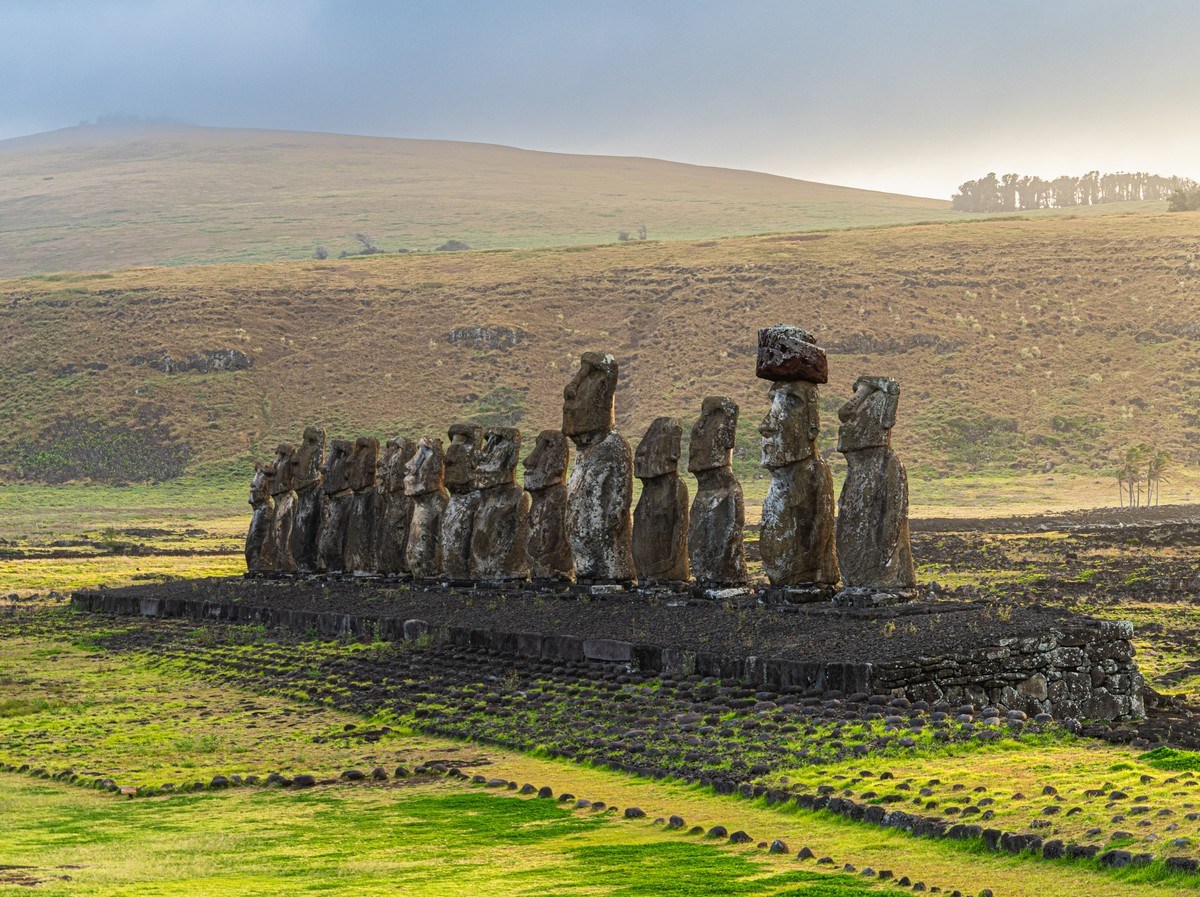
What a stunning installation – on a truly fantastically unusual island:
Nearby – some really ancient, almost completely ruined remains of statues:
We walked over to another ahu platform. This one’s called Ahu Akivi:
Curiously, bucking the trend, these are inland and face the ocean:
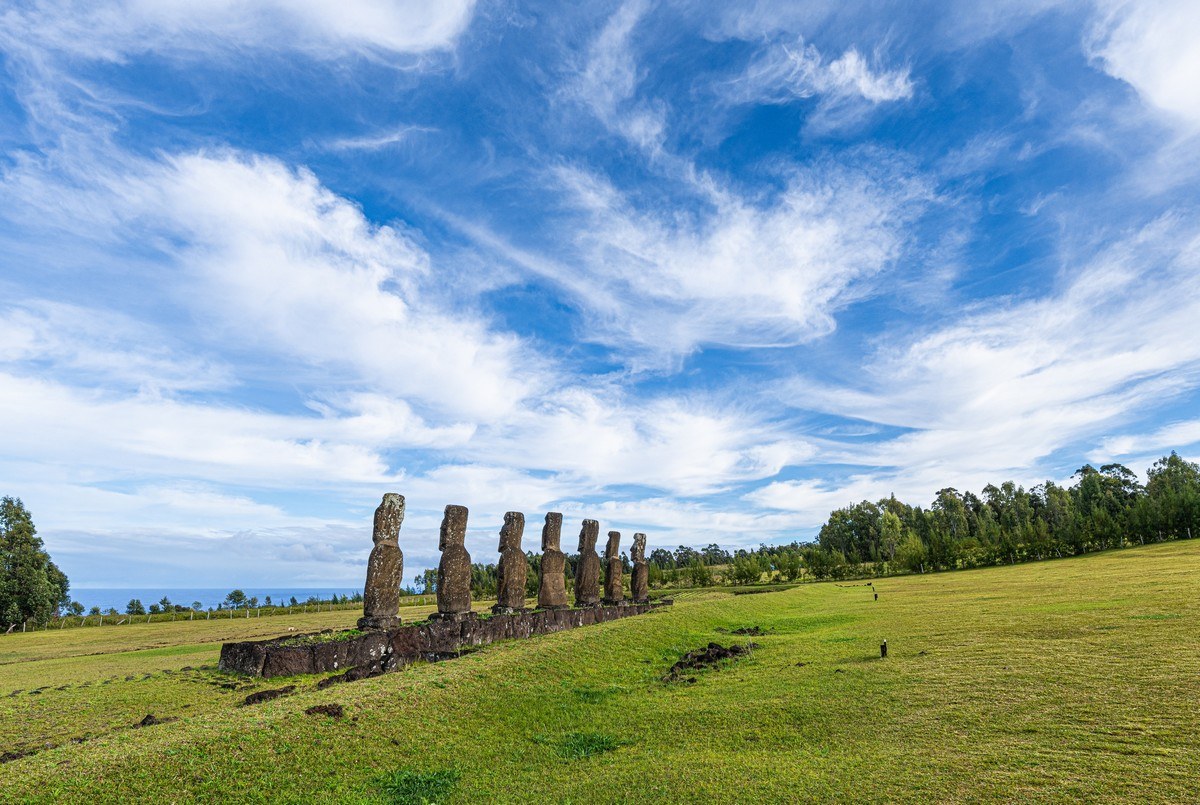
They also serve as a solar observatory – maybe a lunar one as well.
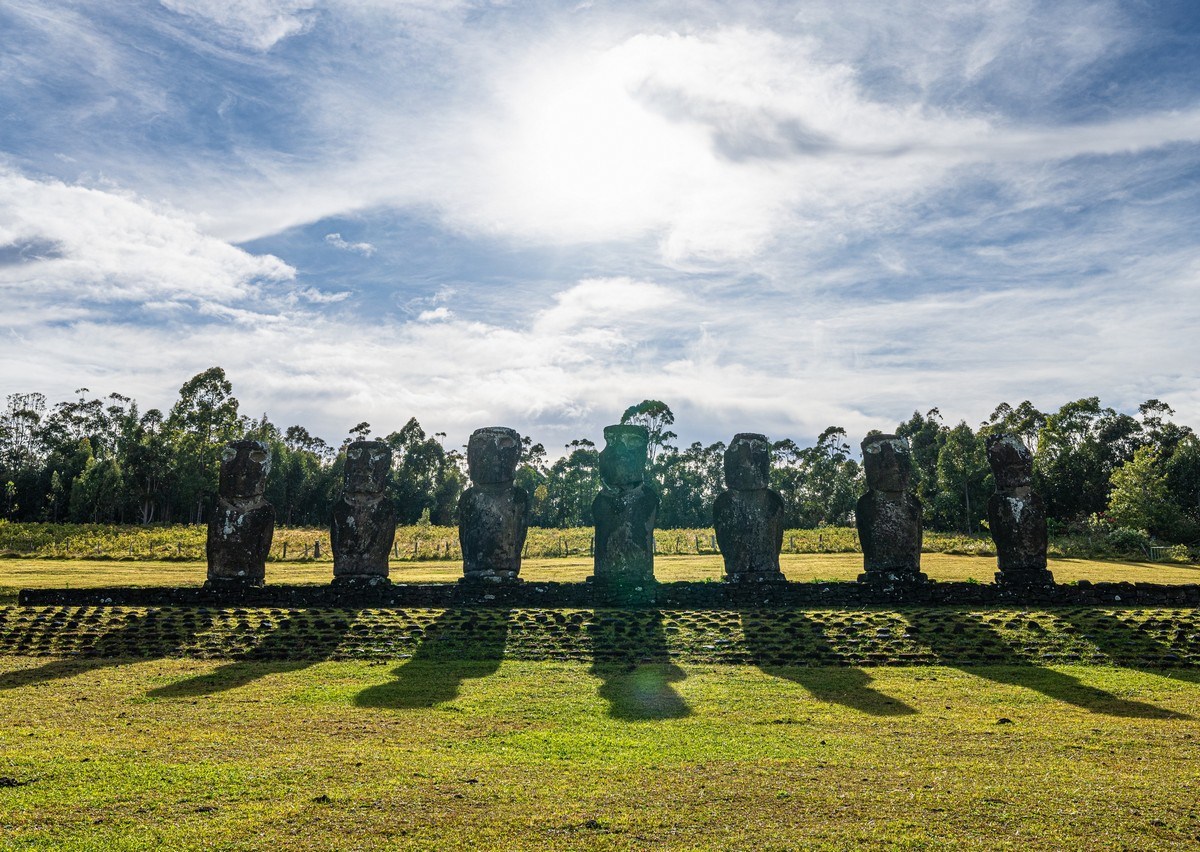
Interestingly, in early photos (from the early 20th century), they’re standing in the middle of a stony desert with no sign of vegetation. Was there really some kind of climatic disaster back then? These days the whole area is covered in grass and trees.
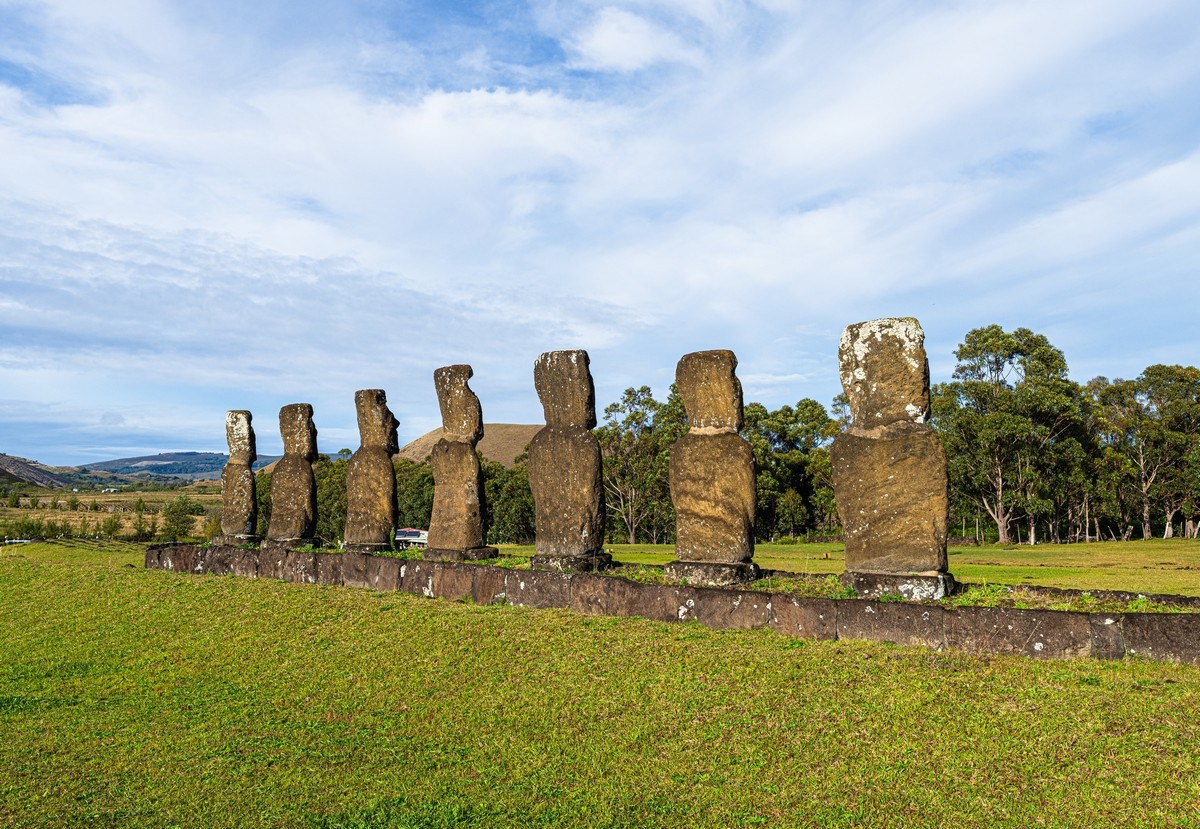
Next up we were heading by car to our next installment of Easter Island fascination. But so as to keep this post bite-sized – I’ll save that for the next in the series…

The best hi-res photos from Easter Island are here.
